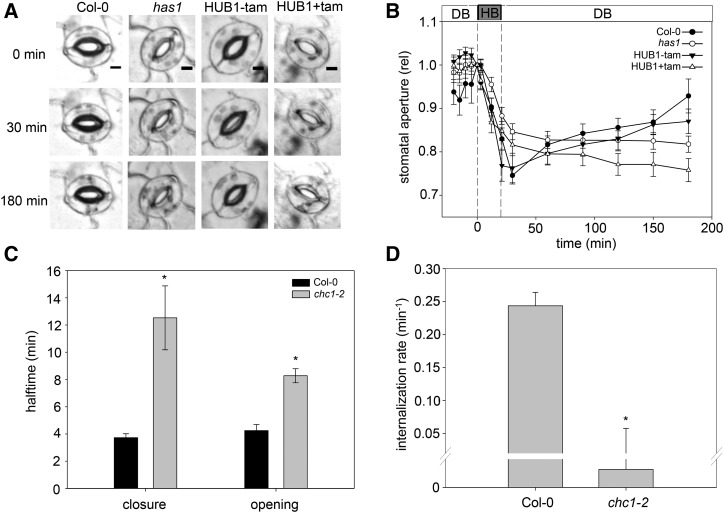Figure 4.
The reduced stomatal dynamics in the chc1 mutant correlate with defects in endocytosis. A, Representative images of stomata during the hyperpolarizing (HB) and depolarizing (DB) buffer treatment time course in control (Col-0 and HUB1−tam) and experimental (has1 and HUB1+tam) plants. Bars = 5 μm. B, Graphical representation of the change in stomatal aperture in response to HB or DB over time. The stomata of the has1 mutant allele and induced HUB1 lines do not reopen after closure. These data represent three independent experiments consisting of at least 24 individual stomata per genotype and are means ± se. C, The half-times for stomatal closure and opening in Col-0 and chc1 mutant plants were calculated from transpiration measured during a CO2 treatment sequence (2 h at 400 µL L−1, 2 h at 1,000 µL L−1, and 3 h at 400 µL L−1). Asterisks indicate significant differences from the wild type (Student’s t test, where P < 0.005). Values are means ± se; n = 5. D, FM4-64 internalization rates in Col-0 and chc1 guard cells. A ratio of the internal-to-peripheral FM4-64 signals was calculated, and the initial value was subtracted from each subsequent value to offset the data. The internalization rates were then calculated. Values are means ± se; data from four to eight guard cells from independent plants for each genotype are presented. The asterisk indicates a significant difference from the wild type (Student’s t test, where P < 0.001).

